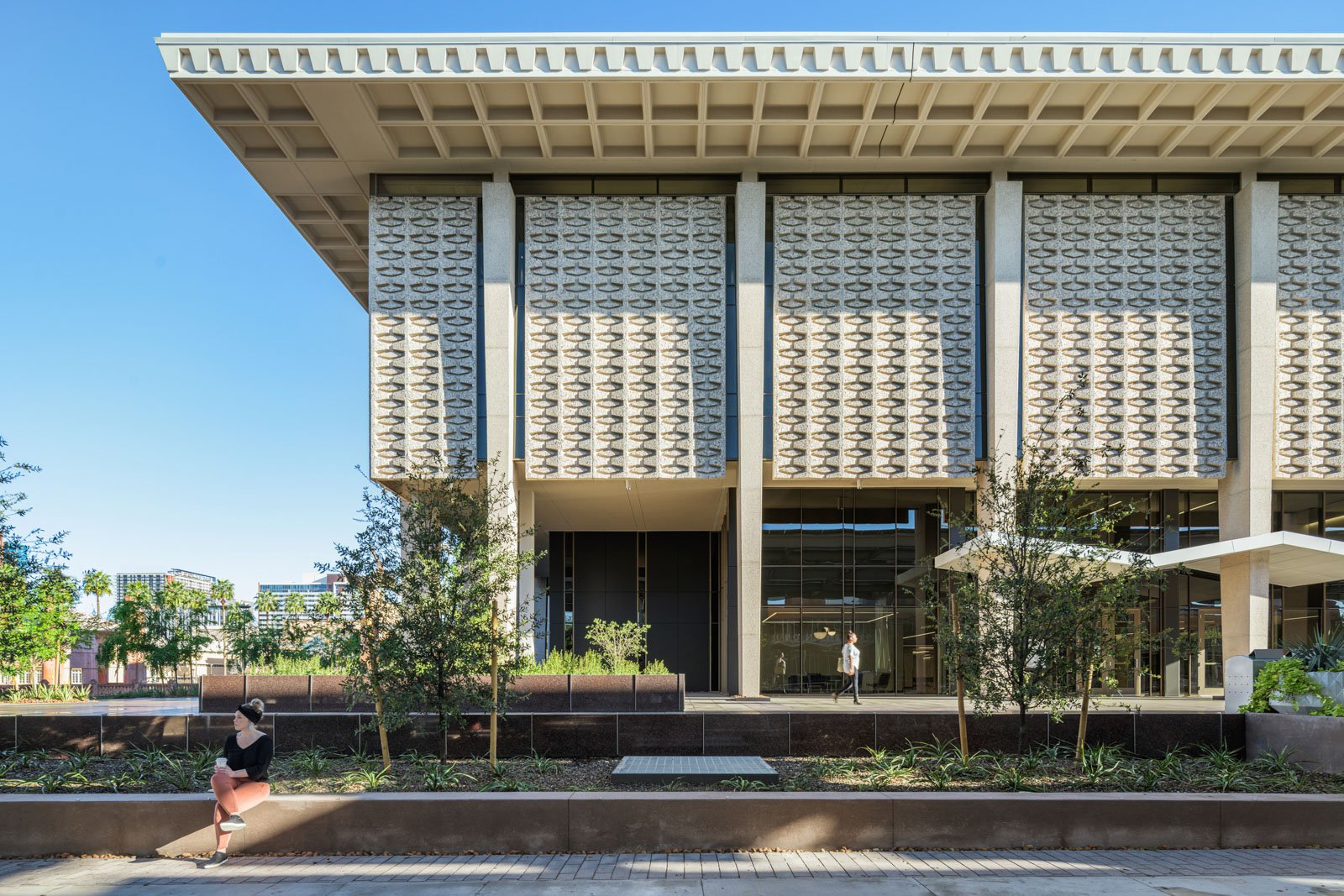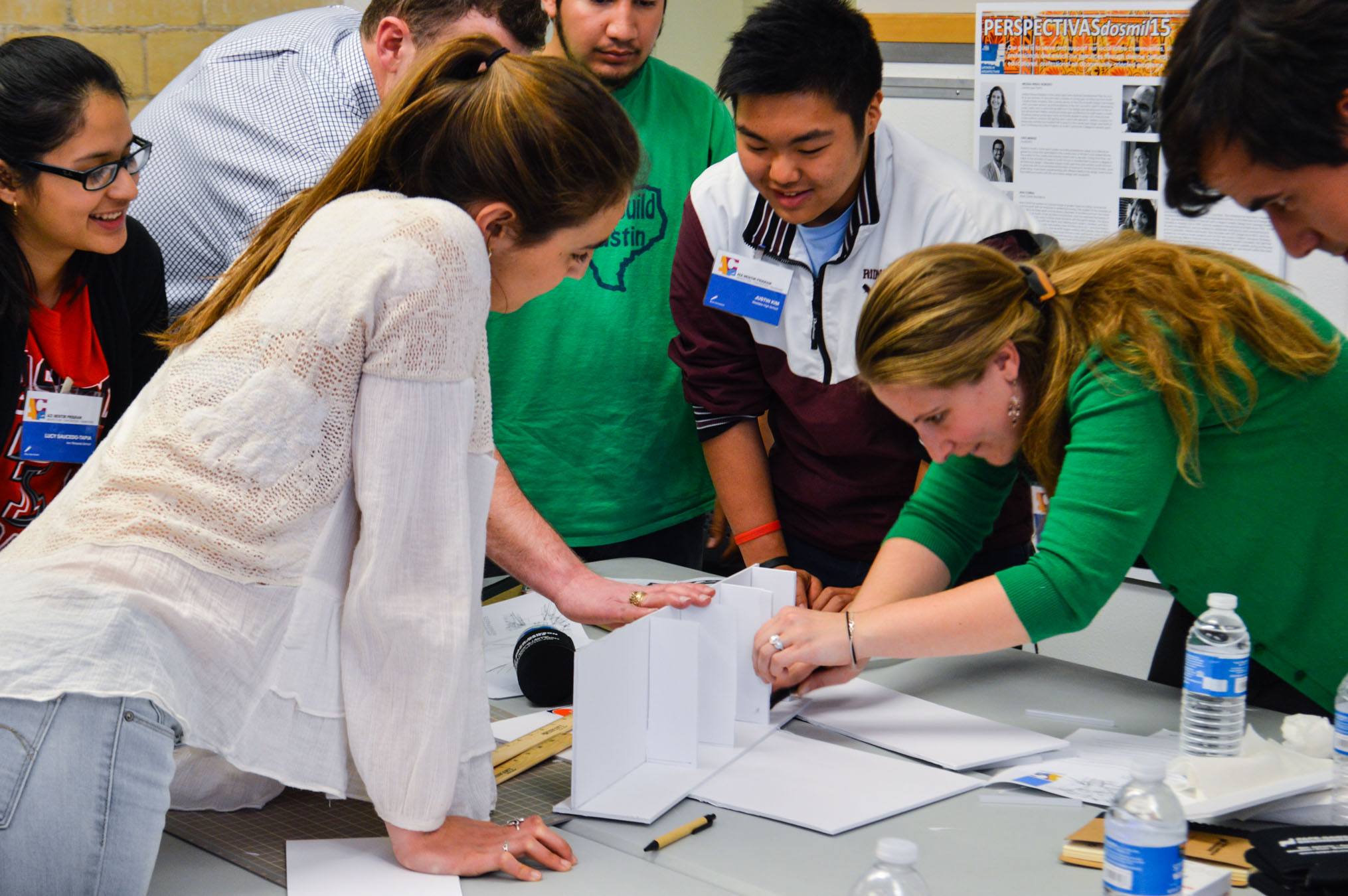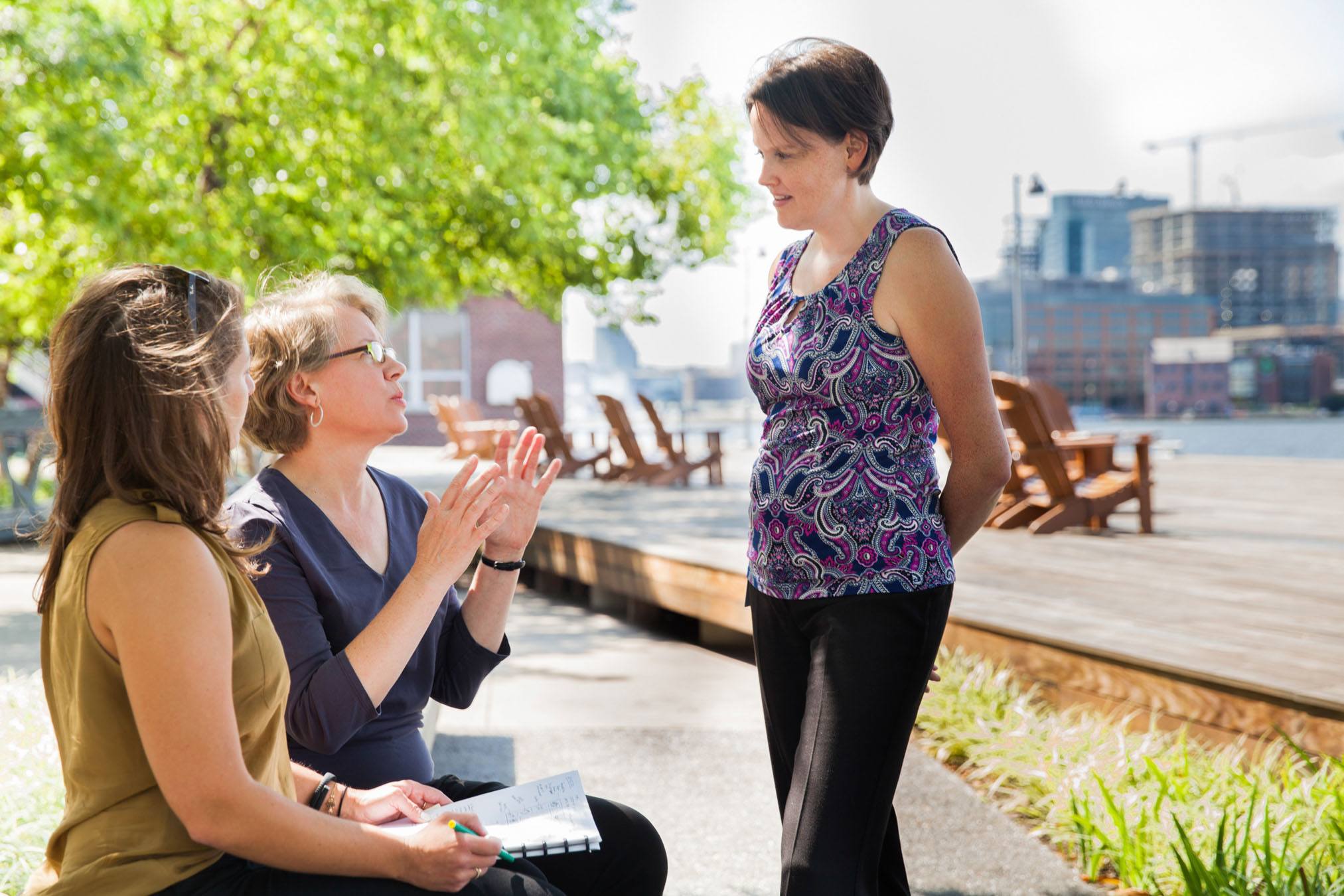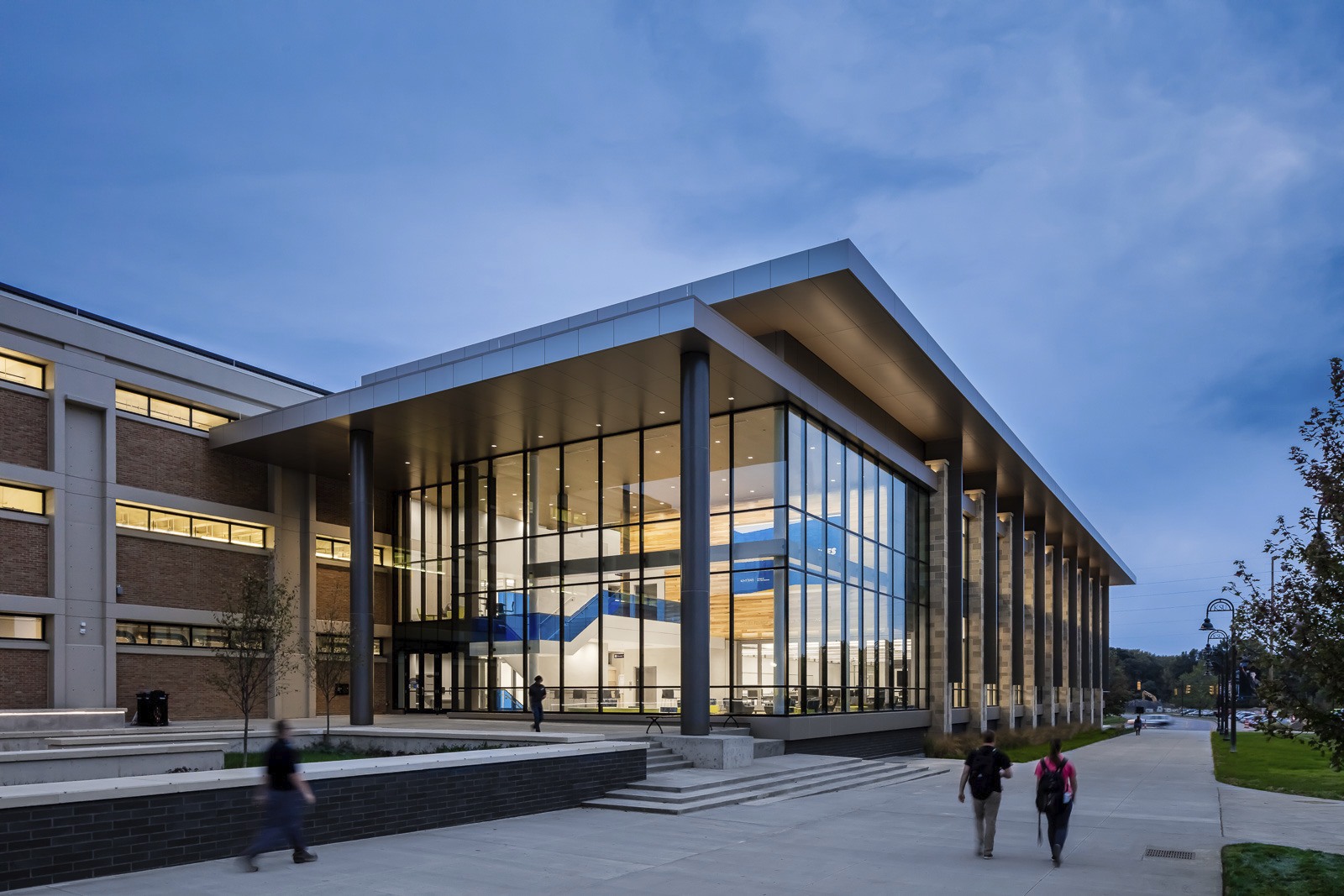Architect Elizabeth McLean specializes in the design and delivery of large-scale academic facilities requiring complex programs. She approaches her work with intention to prioritize social, economic, and environmental sustainability, and has led award-winning projects like Arizona State University’s Hayden Library Reinvention and the renovation of Durham Hall. This year, she was one of 23 architects nationwide to earn an American Institute of Architect’s Young Architects Award, which recognizes individuals who have demonstrated exceptional leadership and made significant contributions to the architecture profession early in their careers.
In this interview, Elizabeth shares her thoughts on designing holistically, teaching, and what inspires her for the future.
What does it mean to design holistically?
I don’t think we can design sustainably without also thinking holistically about the environmental, economic, and social aspects of our work. I really appreciate thinking at all scales about any of these hairy problems that we have and how what we are doing in one place can affect things across the board.
I also like my involvement in a project to be holistic. I tend to be on a project before it starts and stay on it long after it finishes because it’s just continuous for me. My work doesn’t stop or start with project phases or deliverables. How does this project fit with the larger vision of what is happening? How can we continue to make this better? I want to always look at a project and try to see the larger impact of what it means and who will be impacted by it.
Outside the firm, you teach architectural studios to both graduate and undergraduate students. Why is teaching important to you?
Teaching has been a consistent piece of my career because I really do see the value in a commitment to both academia and practice. I see the benefit to myself, I see a benefit to the work, and I see the benefit when I’m working with students and this next generation of young architects and designers . They’re really inspiring.
I try to approach my classes like we’re all learning together, like it’s a collaborative effort even when the projects are individual for each student. There is a lot of dialogue that happens in my classes where we try to solve problems better than they have been solved before or to solve problems that are bigger than they have been before. It’s an incredible privilege to work with a group of students coming into the profession. There are a lot of things that could scare them, but they aren’t afraid. They have a tenacity for the work. They want to get at the issues and find ways to link them to architecture. It’s also really great to be able to encourage them that there are so many opportunities within design and architecture and prepare students to make those later choices about how they can branch off in their work. I think there is so much potential for what the future of architecture can mean.
Which projects have been the most impactful for your career?
They all have been important to me. I love what I’m able to learn and how I’m able to grow with each one, so every new project springs a level of excitement about that potential, regardless of budget, typology, or ambition. I think that’s an important piece of the way that I work, which is trying to balance and remain committed to both academia and the profession. I see that there is potential for learning and improving the work both ways and when those two paths can influence each other, I think that’s very valuable.
Regardless of what the project is, I think it’s important that we are listening and ready to engage with the community and the clients in a dialogue about the potential of the work. It’s about resisting preconceived notions and ideas so that we can work through the vision together and create something that is reflective of the place and the real needs and vision of the community. I appreciate different ways of viewing the design process. I really enjoy celebrating that process and the work.










